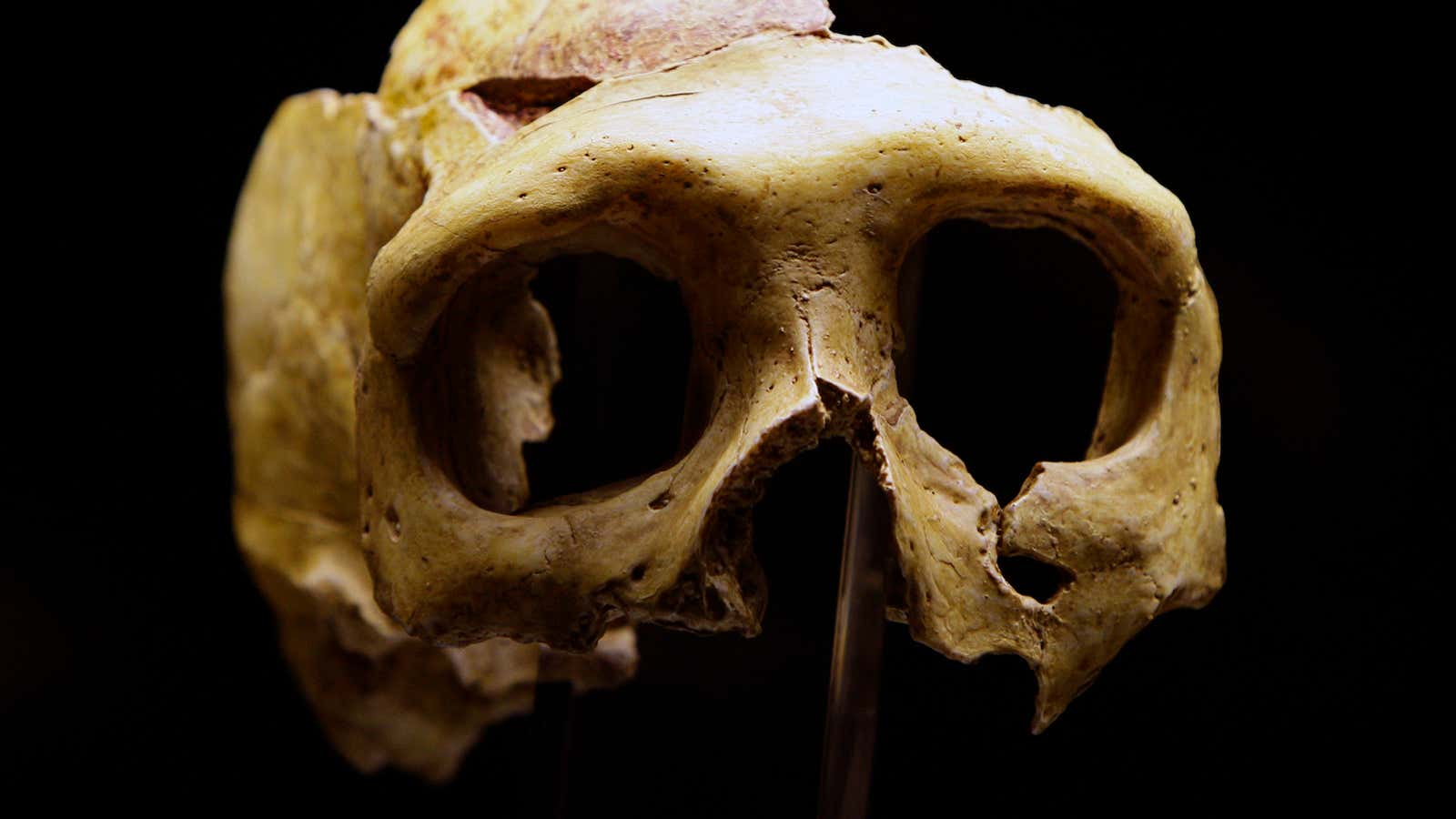Our species are called Homo sapiens and we are thought to have evolved around 315,000 years ago in Africa. For some time, modern humans and “archaic humans”—other early species of human that did not survive, like the Neanderthals who died out 30,000 years ago—lived on the Earth at the same time, often in the same places.
One theory suggests that Homo heidelbergensis—a sort of transitional human species between the ancient and the modern—emigrated out of Africa 300,000 years ago and split. Those that would become Neanderthals went to what is now Europe and parts of western Asia, while those to be Denisovans—who were only discovered as a species in 2008—headed mostly to eastern Asia. (The ones who stayed behind became us, Homo sapiens, and left Africa 60,000 years ago, the theory goes.)
There is more and more evidence that the various species of humanity intermingled in ways we hadn’t previously imagined.
A report in Nature this week shows that, around 50,000 years ago, a Neanderthal and a Denisovan had a daughter. The girl, who was at least 13 years old, is one of fewer than 20 archaic humans who have had their whole genomes sequenced—hers from a single bone found in a cave in the Altai Mountains of Siberia. She is the first discovery of an archaic-human hybrid.
And it’s further evidence of mating between the species. Research using the mitochondrial DNA of specimens found in Germany suggested that Homo sapiens were mating with Neanderthals more than 220,000 years ago—much earlier than thought. A sequencing of modern-day human DNA against Neanderthal DNA in 2010 showed that Neanderthal DNA is 99.7% identical to modern human DNA. (For contrast, modern humans and modern chimps are 98.8% identical.) It is thought that Homo sapiens and Denisovans may also have bred with each other.
Denisovan DNA still appears in people in east Asia, such as the (occasionally blonde-hair, blue-eyed) Melanesians of Papua New Guinea and the Solomon Islands in the Pacific. And all non-African humans have DNA from Neanderthals.
The linage of the Neanderthal-Denisovan child indicates just how complex the familial relationships were between all these early forms of humans. Genetic tests revealed that the Denisovan father of the girl had at least one Neanderthal ancestor himself.
